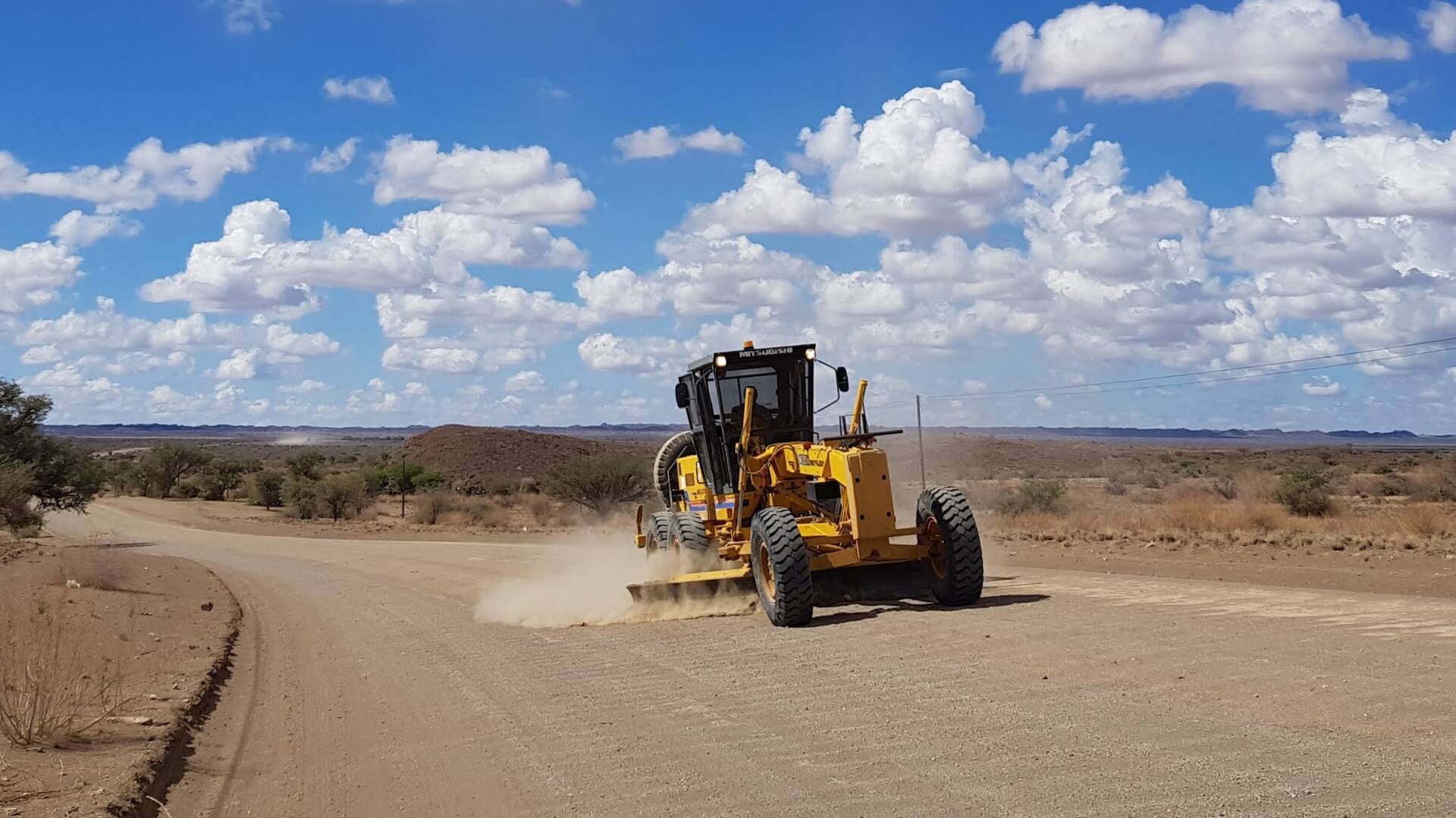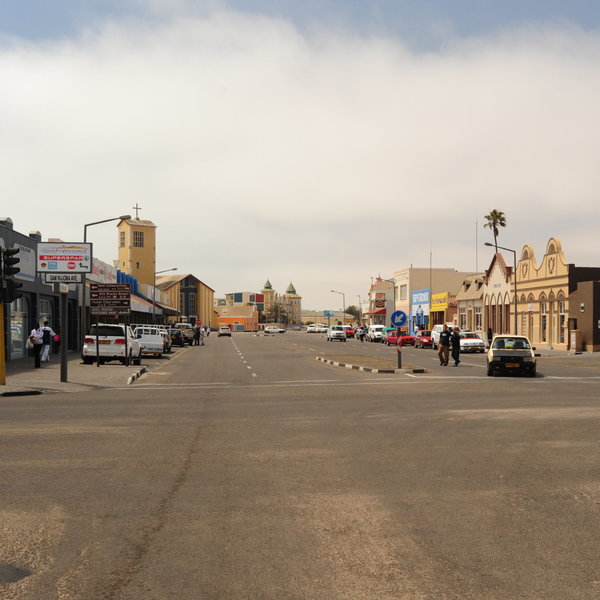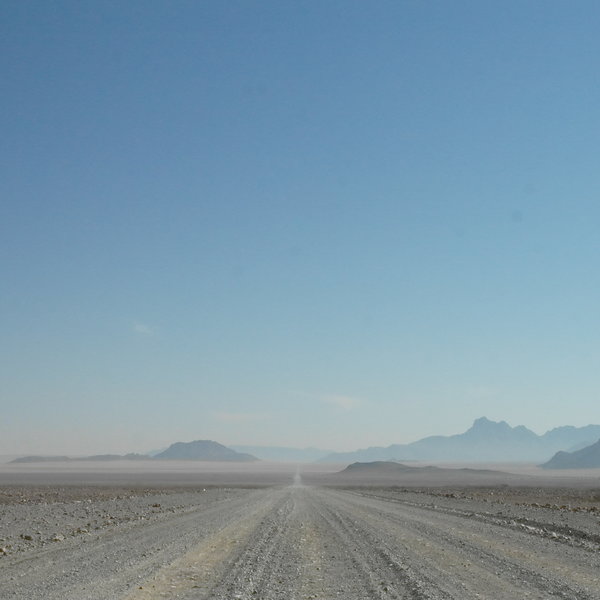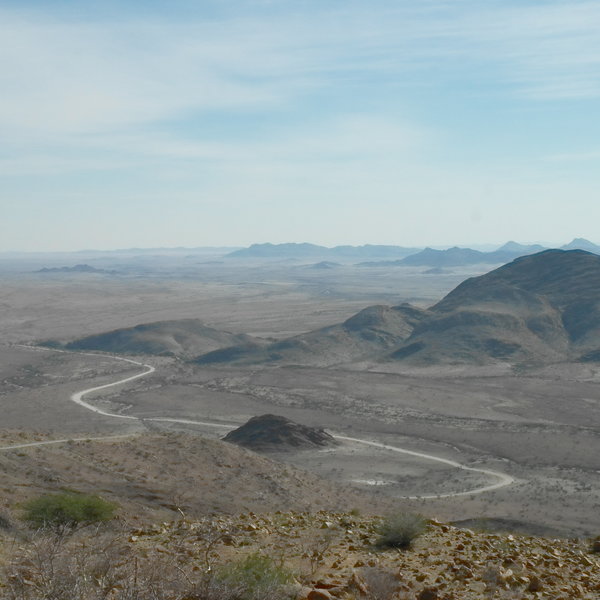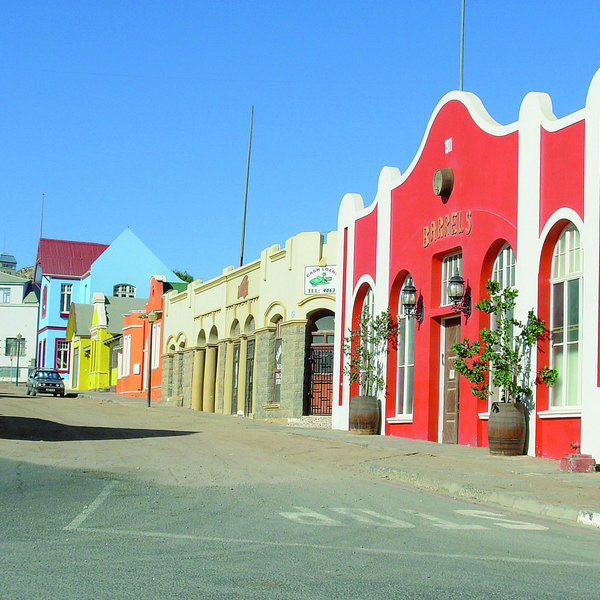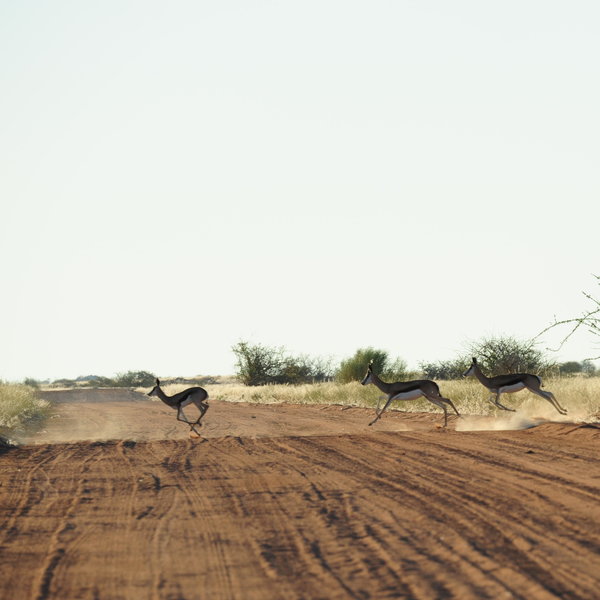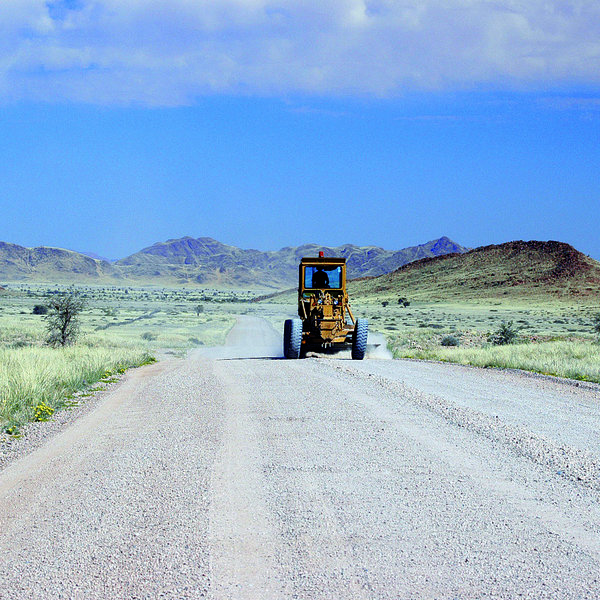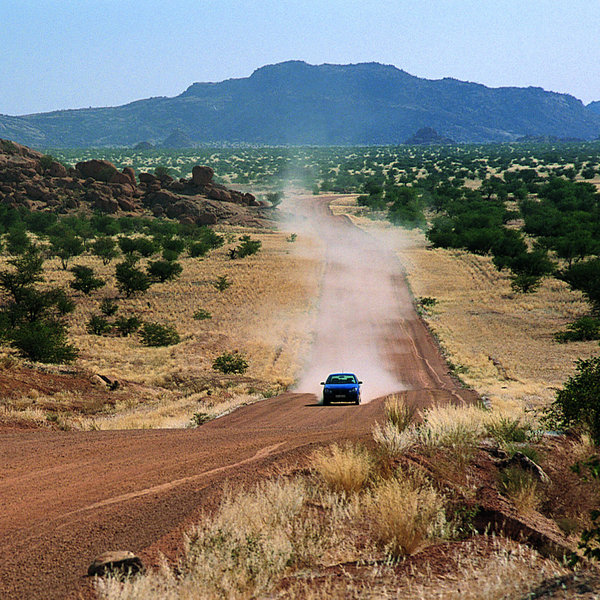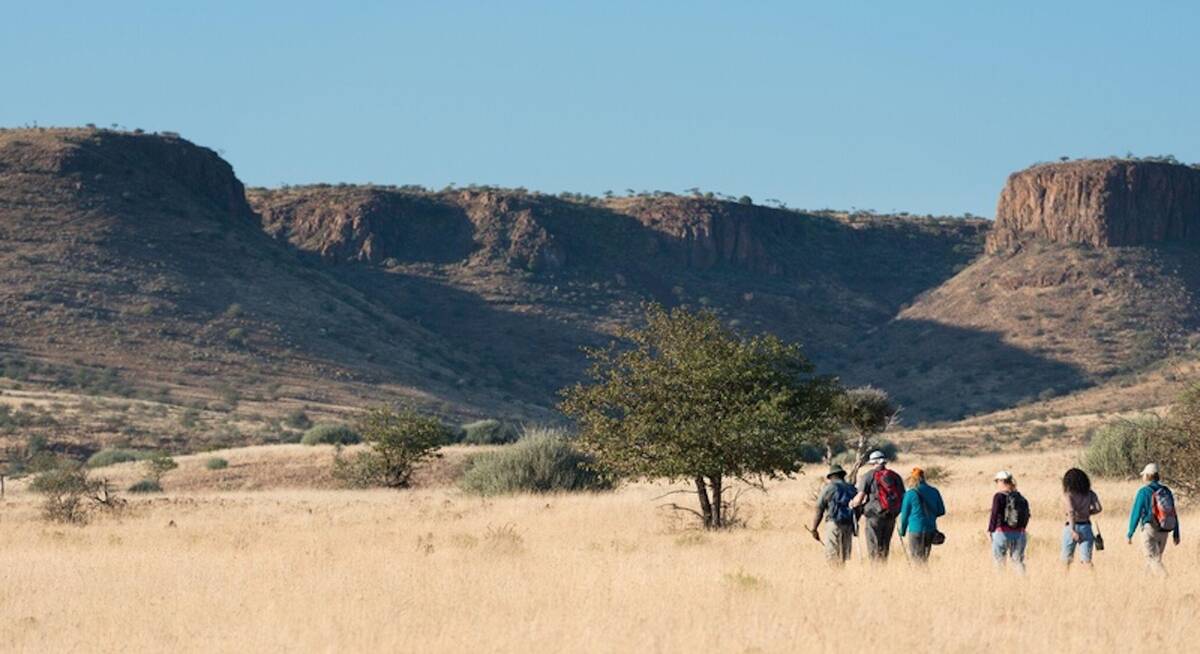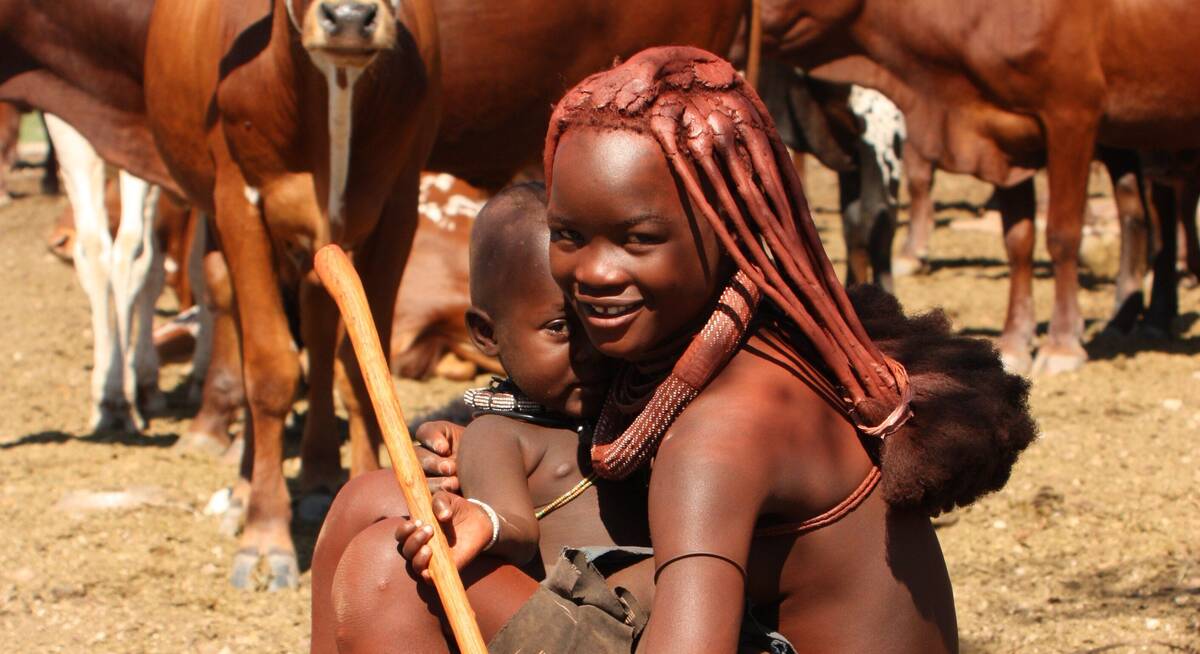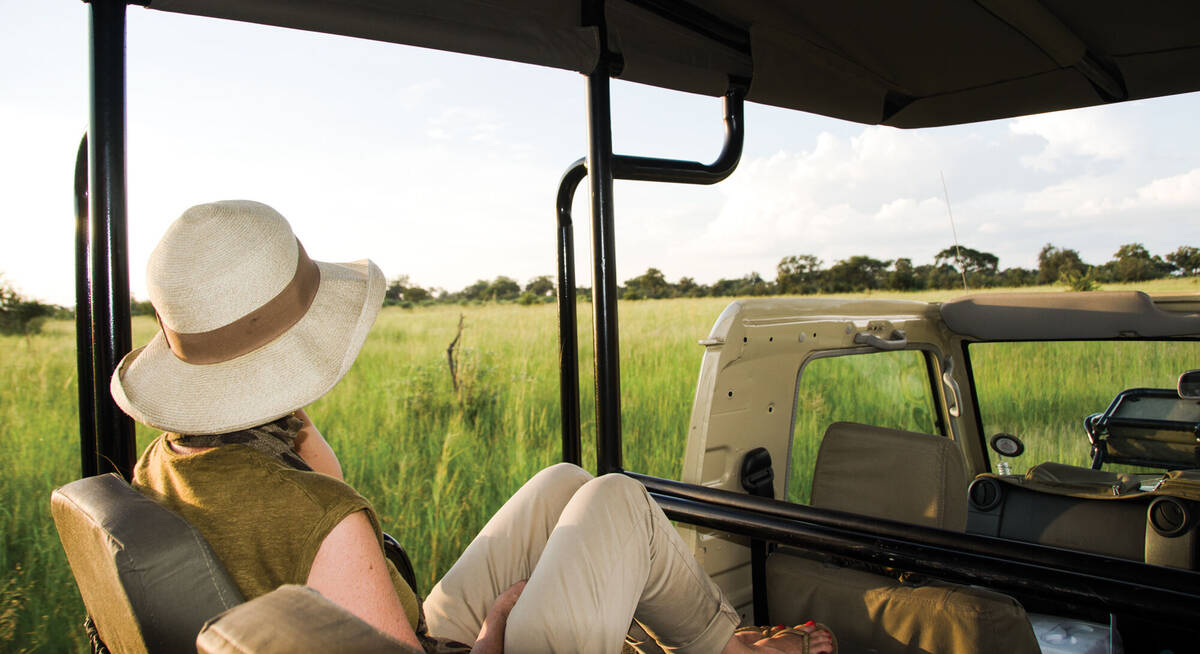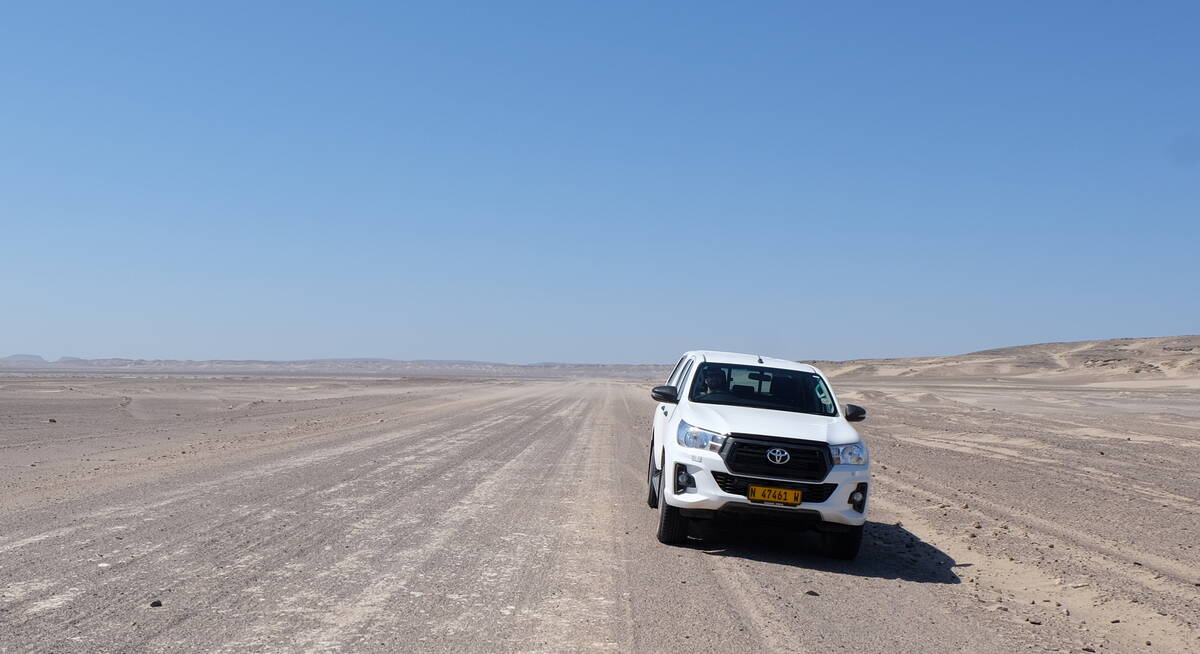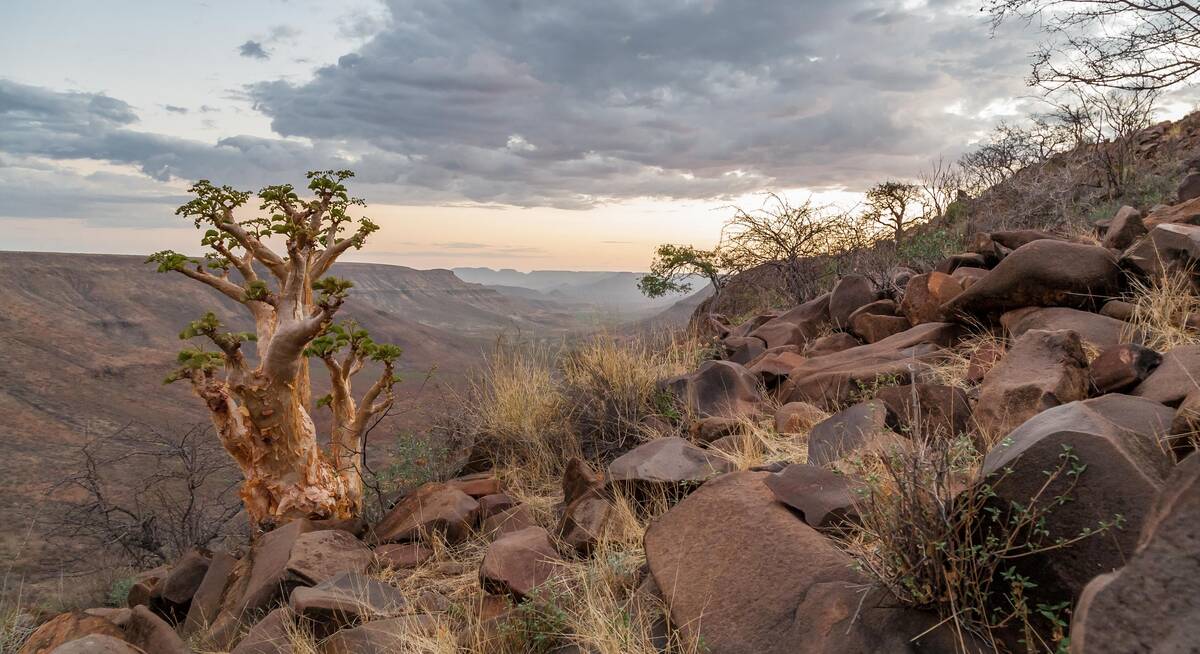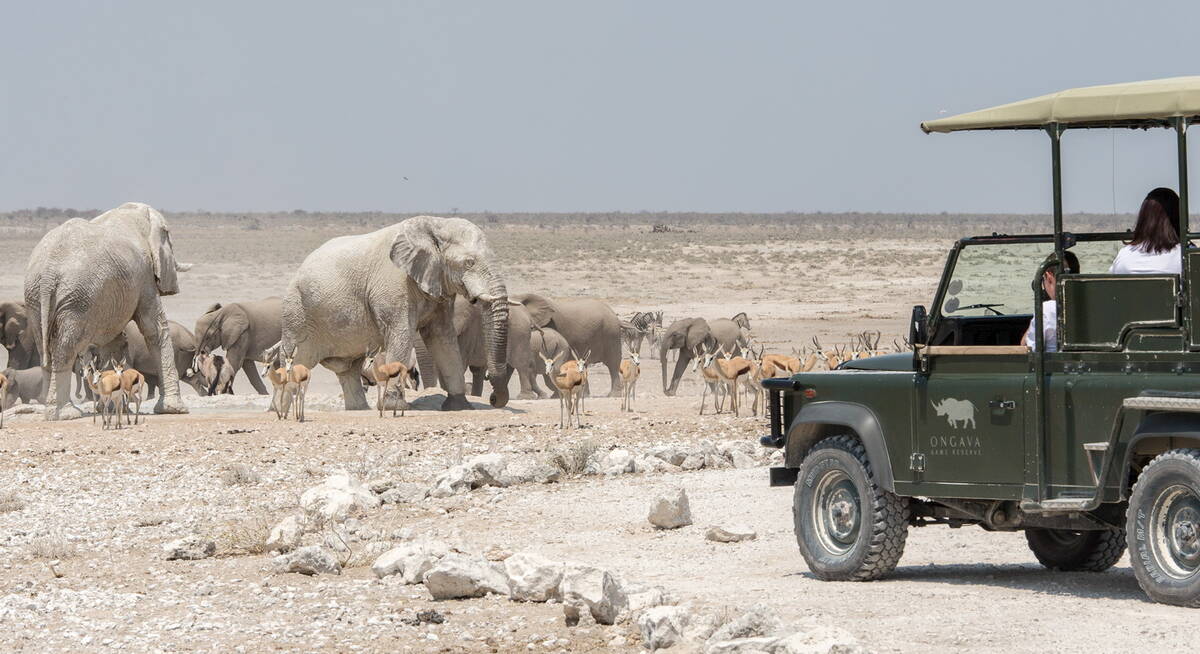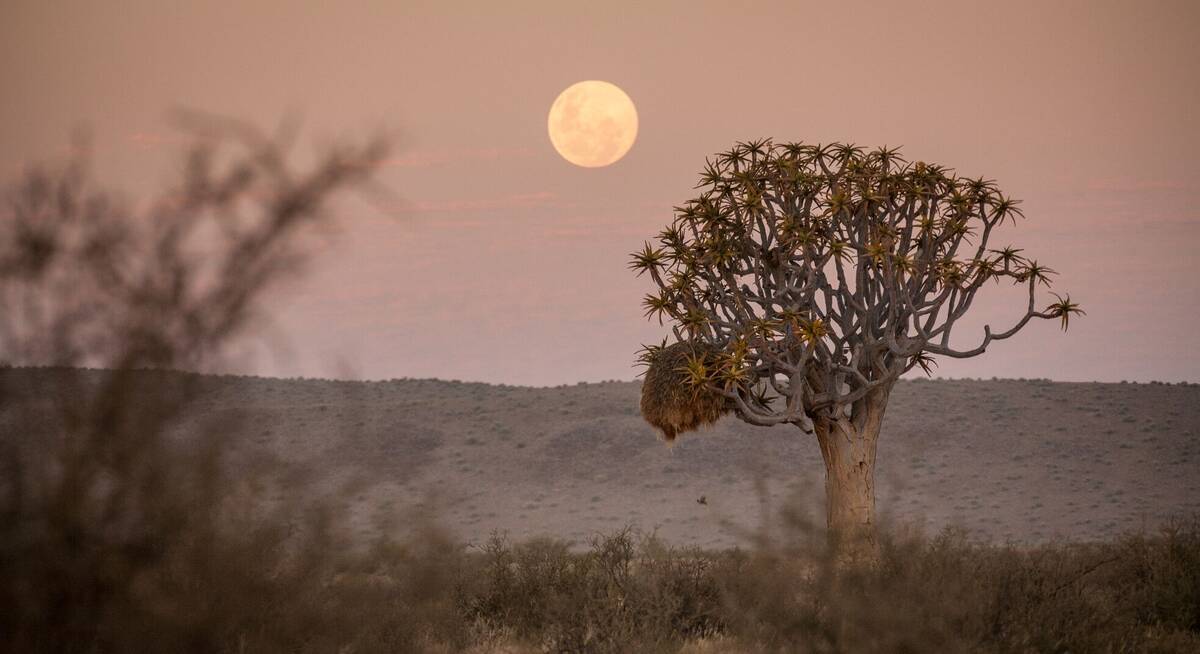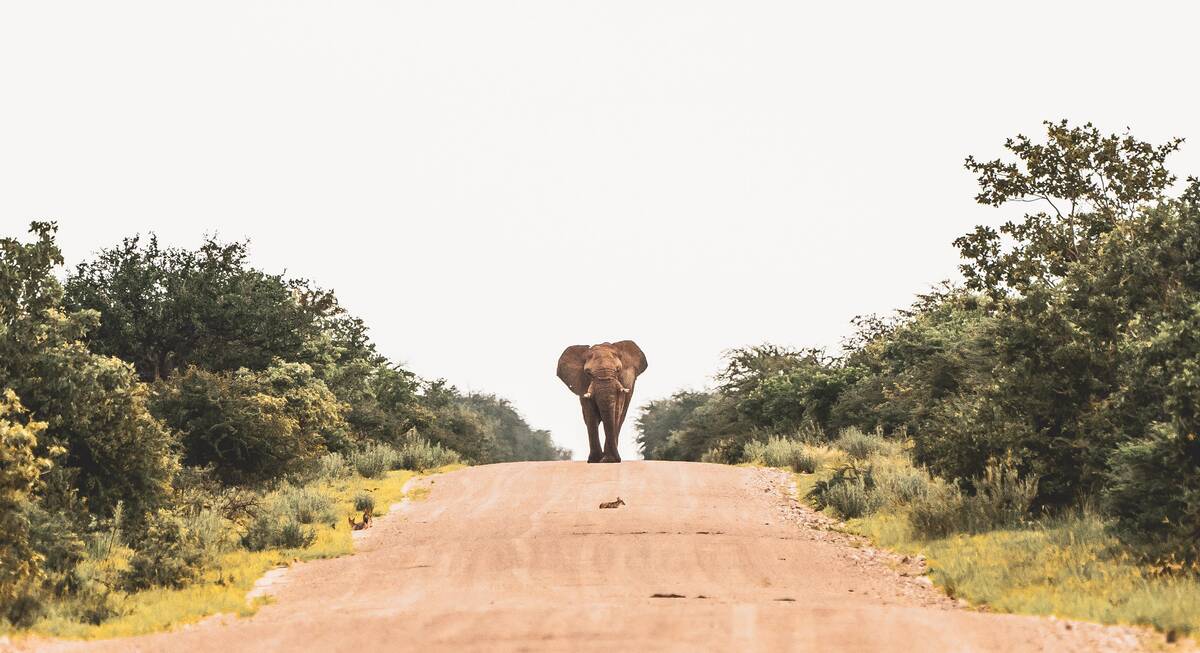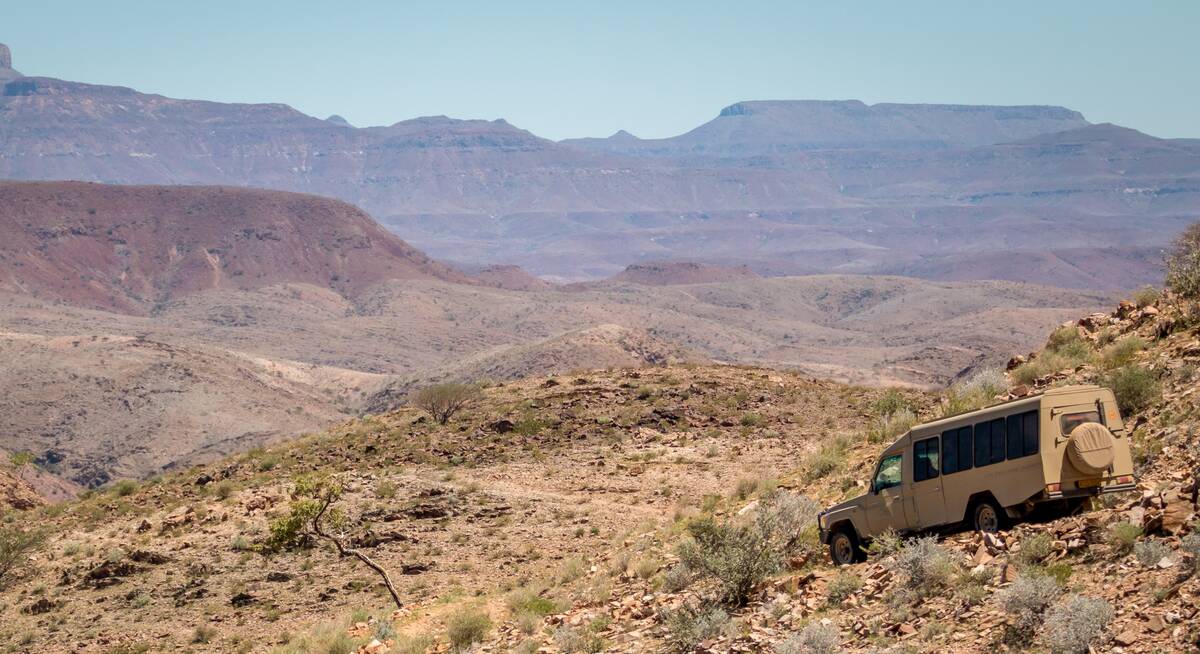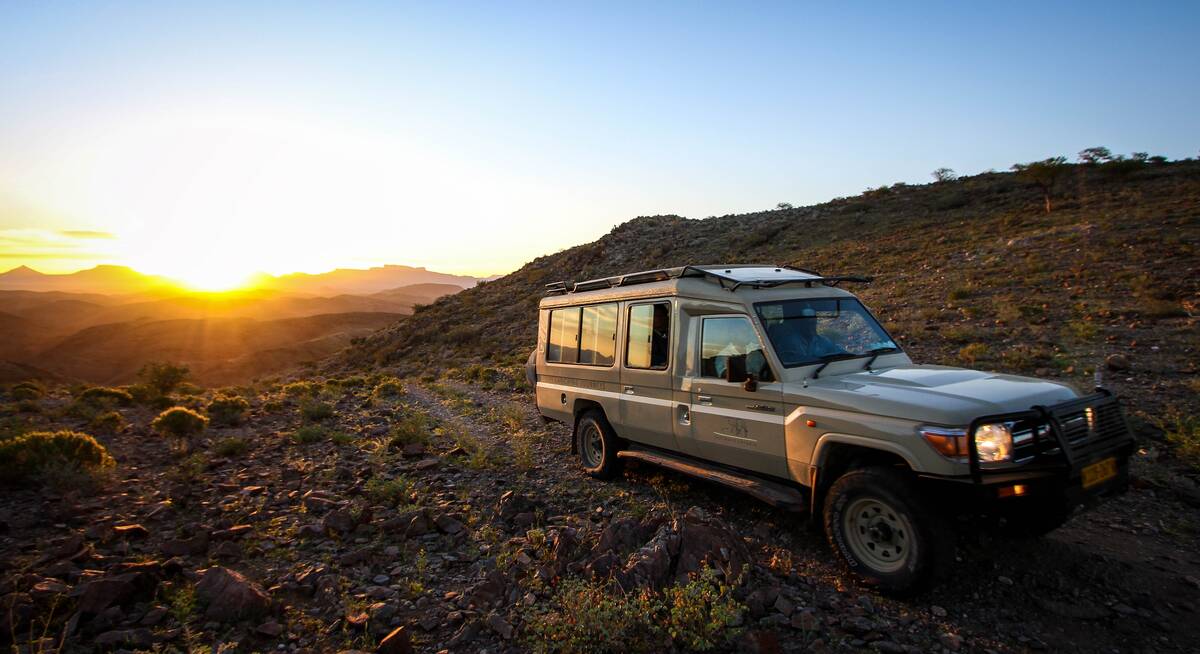Some examples of the kind of road to expect in Namibia...
...including the roads in the NamibRand...
... and the stunning Spreetshoogte Pass which is in our opinion worth a detour.
Meanwhile in Luderitz, this is a typical town road...
...and this might be what to expect in Damaraland.
Warning: you may come across animals in the road...
...a grader at work...
and when passing other vehicles on the gravel you can expect a dust cloud.
Navigation
The TASA map of Namibia is among the best and we will provide you with one of these before your trip. Note that recent years have seen a rolling programme of changes to Namibia’s road numbers, with D-roads being upgraded to C-roads, and their numbers changing entirely. The current map indicates some changes, but local signposts can be slower to change.We’re sometimes asked, ‘Do I need a GPS for driving in Namibia?’ – and our answer is generally ‘No’, unless you’re going significantly off-piste. In these cases we recommend getting a device with Tracks4Africa loaded on it, as conventional car GPS devices are not usually up to the task.
Generally, though, most visitors find navigation in Namibia surprisingly easy: using the map and local road signs is usually enough to prevent getting seriously lost. If you are ever unsure, you’ll find that local people (when you can find any!) are normally friendly and helpful.
Before your journey, it’s often a good idea to discuss your route with your camp manager, both for the latest local knowledge and so that you don’t miss out on anything on the way.
For more information on the car hire and Namibian roads, see also:
► Self-drive - types.
► Self-drive - driving tips.
► Self-drive - hire groups.
Our top picks for holidays to Namibia
We'll always tailor-make your Town for you. Here are some of our favourites to inspire you.

Looking for inspiration on where to travel next?
Visit our trip chooser to explore your options and find inspiration for your perfect African adventure
Inspire me